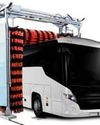
Government regulations have continually pushed fleet management companies to replace their older fleet of CVs with newer vehicles, leading to an increase in the sales of CVs. Indian CV shipments increased by 25% year-on-year (YoY) in 2018. Tata Motors, Ashok Leyland, and Volvo-Eicher registered a growth of 27%, 29%, and 34%, respectively (Fig. 1). Both heavy commercial vehicle (HCV) and light commercial vehicle (LCV) segments saw an increase.
From April 2020, India will be switching to BS-VI emission norms, equivalent to Euro-VI. Heightened safety norms also have required the OEMs to invest in offering mandatory safety features like ABS (anti-lock braking system) on their products. OEMs and oil refining companies, who have invested billions of US dollars to supply BS-VI grade fuel, will need time to recoup their investments before gearing up for another mandatory technological upheaval.
Key component additions
Based on government regulations and technology adoption, the following are the main components which will increase the electronic component share in commercial vehicles:
هذه القصة مأخوذة من طبعة August 2019 من MOTORINDIA.
ابدأ النسخة التجريبية المجانية من Magzter GOLD لمدة 7 أيام للوصول إلى آلاف القصص المتميزة المنسقة وأكثر من 9,000 مجلة وصحيفة.
بالفعل مشترك ? تسجيل الدخول
هذه القصة مأخوذة من طبعة August 2019 من MOTORINDIA.
ابدأ النسخة التجريبية المجانية من Magzter GOLD لمدة 7 أيام للوصول إلى آلاف القصص المتميزة المنسقة وأكثر من 9,000 مجلة وصحيفة.
بالفعل مشترك? تسجيل الدخول

ATS ELGI launches new range of equipment for CV segment
GARAGE EQUIPMENT

VECV delivers 50 CNG buses to PMPML in Pune
VEHICLE ZONE

Lucas TVS chosen as one of India's best workplaces in auto industry
The certification was done by The Great Place to Work Institute which works with the purpose of giving companies an opportunity to benchmark their practices that make every workplace unique for employees

JAMNA AUTO launches new trailer air suspension, bullish on market success
Understanding the pulse of the Indian customers, drivers and operating conditions, the home-grown company has come up with an ‘Indian product for Indian roads at Indian price’, reports N. Balasubramanian

Bridgestone drives Saabri Logistics' advancement with top-notch end-to-end tyre management
It is never easy for a fleet operator to strike the right balance between tight revenues and rising fuel and parts’ costs. However, if chosen wisely, important elements such as tyres can help in business advancement. Rajesh Rajgor finds this to be true in the case of Saabri Logistics

ZF to invest Euro 200 million as part of ‘Refresh India' strategy
ZF has announced a significant investment of around Euro 200 million as part of a strategic consolidation of its business domains with renewed impetus to drive growth in the Indian market over the next decade.

Chasing records, making roads, with Tata trucks
Jagdish Kadam, Chairman & Managing Director, Raj Path InfraCon shares details with MOTORINDIA about striving to create a world record for the longest road constructed in 24 hours, his company operations, and his fruitful association with Tata Motors.

IPL-Shaw JV for DEF solutions takes flight!
Commenting on this development, Gautam Venkataramani, Director, IPL Shaw Solutions India, said, “India Pistons Limited’s customer experience, local manufacturing strength over 60+ years with research and development and application engineering expertise will be used to provide DEF system solutions with light-weighting, performance-oriented approach leading to CAFE focus.”

What COVID has taught the resilient auto retail industry
In this special Guest Column, Vinkesh Gulati, President, Federation of Automobile Dealers Associations (FADA), shares his observations and views on how the Indian automotive retail sector has weathered the COVID storm and the key learnings and takeaways from the experience

“Cautiously optimistic on growth as COVID continues, emphasis on strong exports and aftermarket” - Vinnie Mehta
Contributing more than 6% to the nation’s GDP as per reports in April 2021, the Indian automotive industry in its entirety provides employment to about ‘37 million people’.